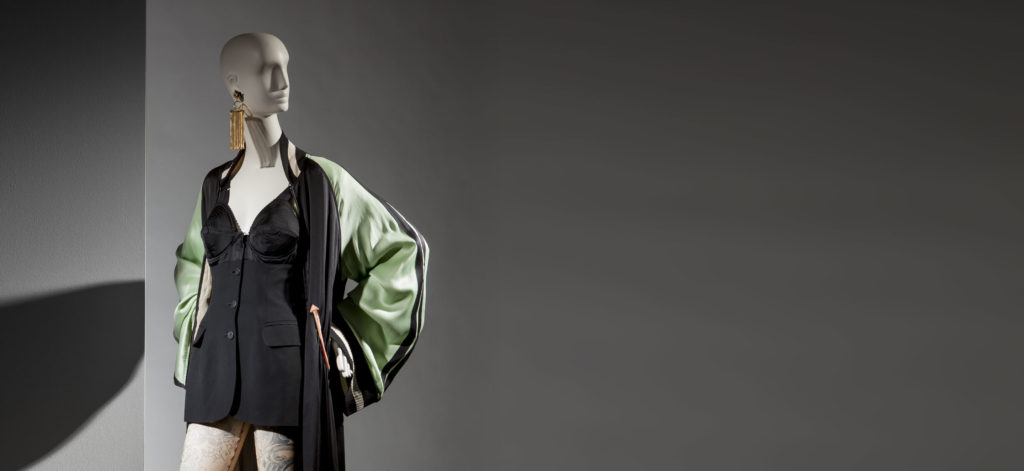Fashion’s Subversives is organized by Phoenix Art Museum. It is made possible through the generosity of Arizona Costume Institute, with additional support from the Museum’s Circles of Support and Museum Members.
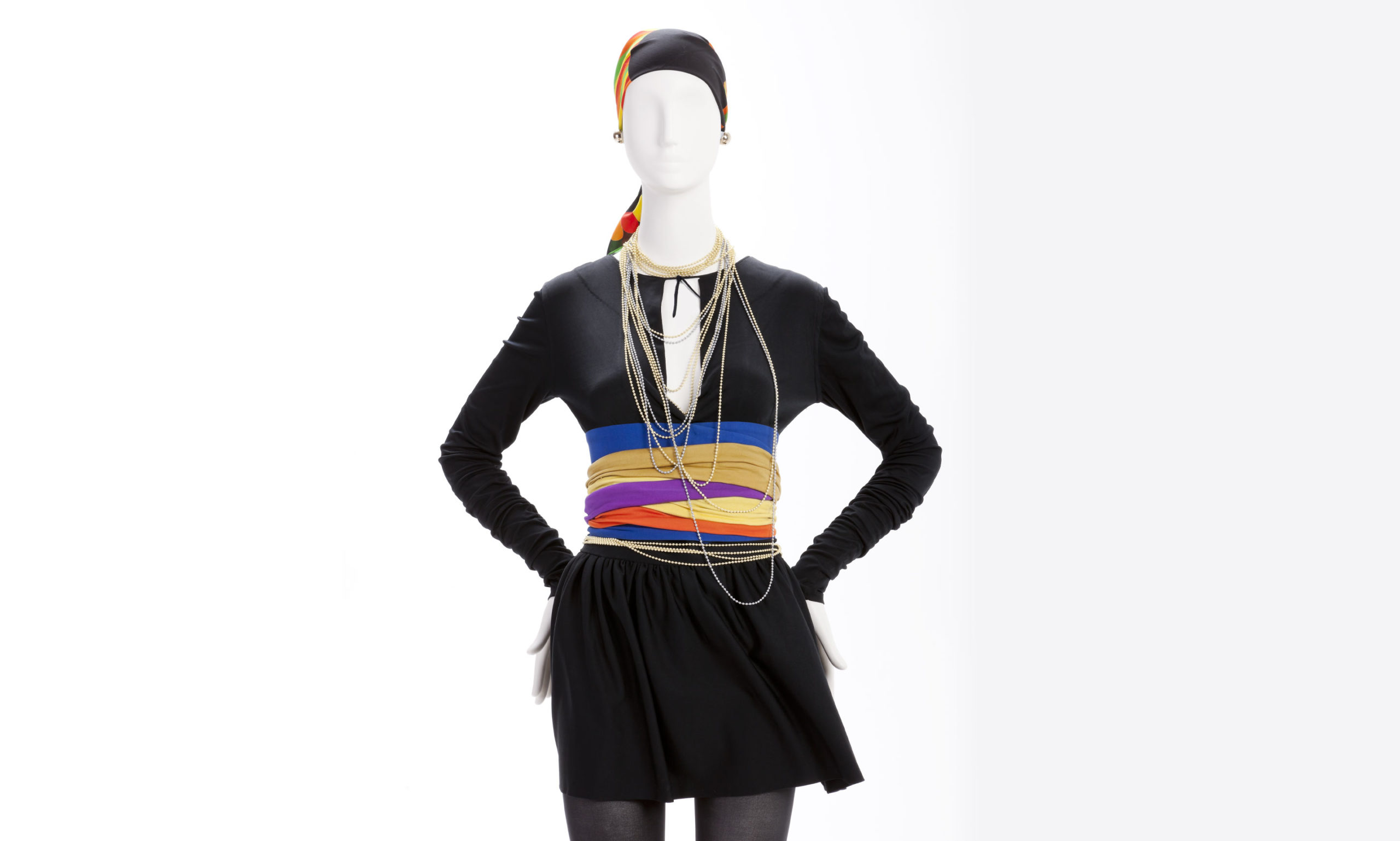
ABOUT THE EXHIBITION
Spanning the 19th century through today, Fashion’s Subversives presents nearly 40 examples of garments and accessories—from the humble denim jean to the scandalous bikini—that broke from culturally accepted norms and forever changed popular fashion and the fashion industry. Featured designers include Yves St. Laurent, Geoffrey Beene, Giorgio di Sant’ Angelo, Paco Rabanne, Balenciaga, Rudi Gernreich, Diane von Furstenburg, and Paco Rabanne.
Created as a complementary exhibition to the special-engagement exhibition Fearless Fashion: Rudi Gernreich, Fashion’s Subversives amplifies the concepts of revolution, resistance, and authenticity captured in the retrospective of Gernreich’s life and work, which is organized and circulated by the Skirball Cultural Center, Los Angeles. Much like Gernreich’s own brave and audacious designs, including the topless monokini, the ensembles in Fashion’s Subversives changed contemporary fashion not only on the runway, but in real life.
IMAGE CREDIT
Giorgio di Sant’Angelo, Surplice Black Bodice with Multi-colored Ties, Longsleeves, Wide Panel of Blue at Waist, 1968. Lycra. Gift of The Metropolitan Museum of Art.
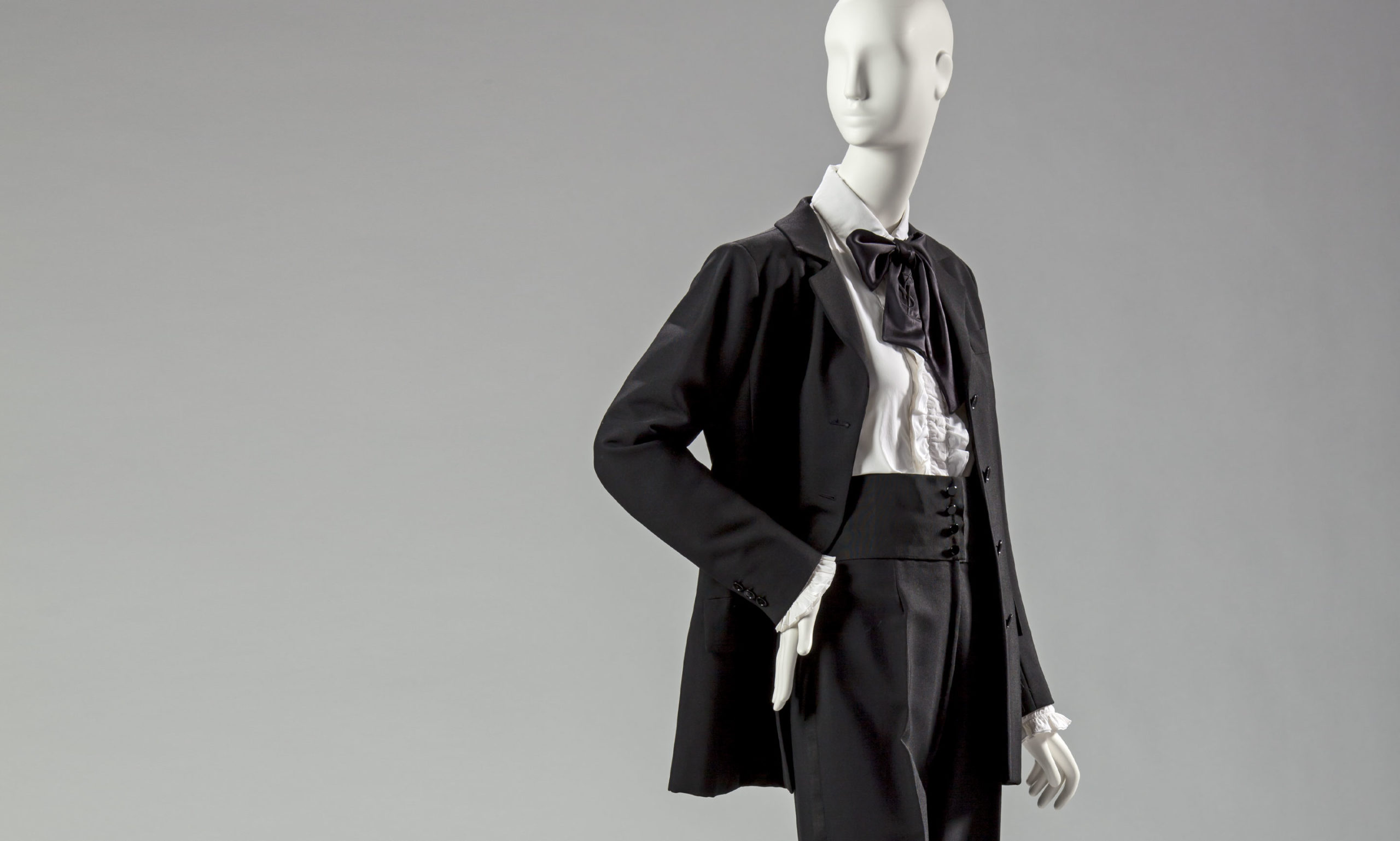
The exhibition’s ensembles and accessories are organized into sections based on the subversive ideals they embody. Jumpsuits by Gernreich, Diane von Furstenberg, and Geoffrey Beene, which prioritized utilitarian function and comfort, contrast with garments by those like Emilio Pucci who departed from the use of traditional fabrics and materials to create dresses made of chainmail, plastic discs, and Lycra. Sections of miniskirts and hot pants from the 1960s and 1970s, as well as a bevy of bathing suits and bikinis, then address the complicated subject of modesty.
Fashion’s Subversives also explores the histories of denim jeans as a symbol of 1950s youth culture and how designs such as Chanel’s little black dress and the advent of costume jewelry undermined the socioeconomic hierarchy of the industry by making versatile, stylish, and expensive-looking clothing and accessories affordable for the masses. Yves St. Laurent’s 1967 smoking suit for women—the first tailored tuxedo suit for women—is also featured as an example of fashion that transcended accepted gender norms.
IMAGE CREDIT
Yves Saint Laurent, Black Wool Tuxedo Jacket, 1967. Wool. Gift of Mrs. David E. K. Bruce.
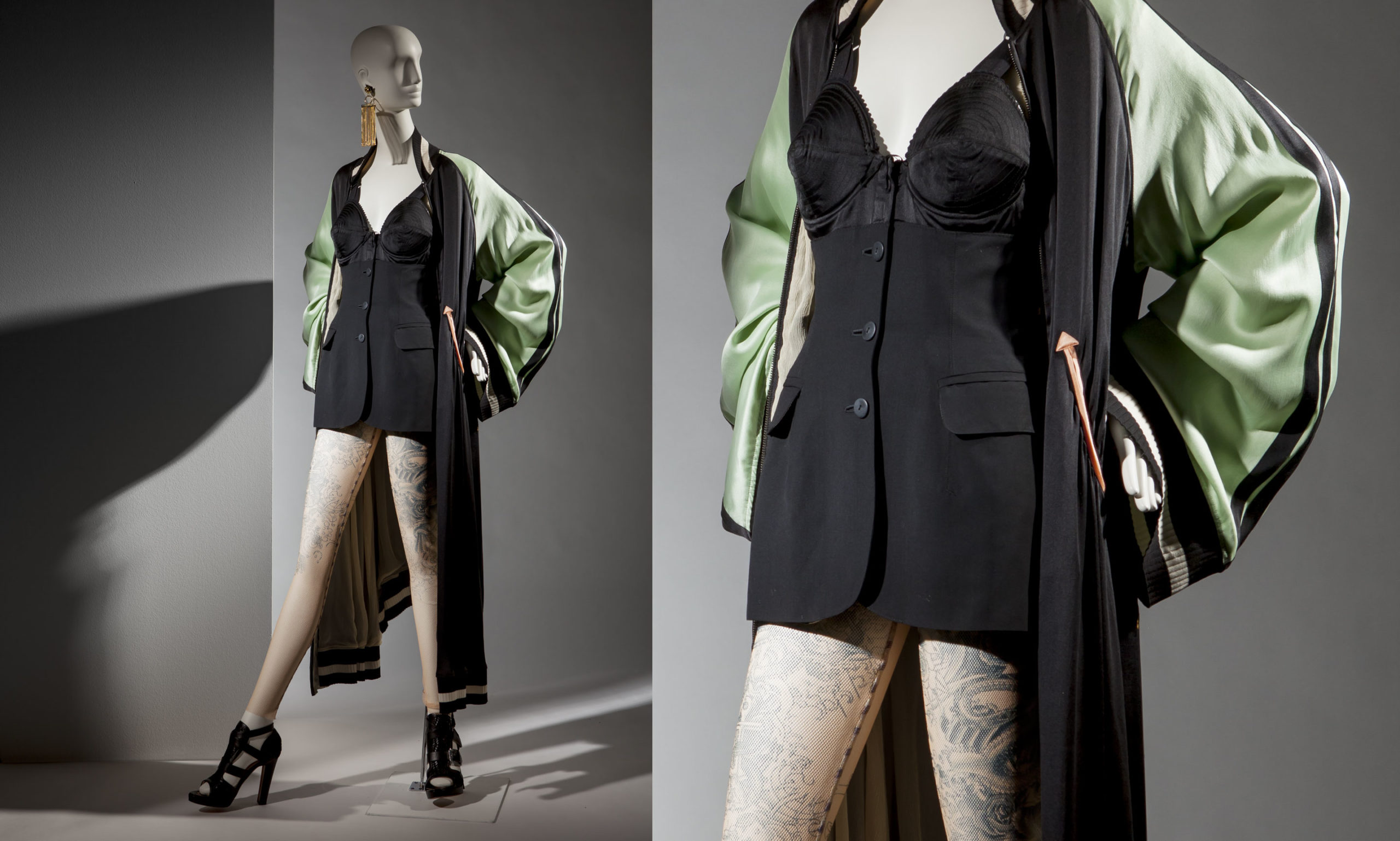
Fashion’s Subversives draws entirely from the Museum’s comprehensive fashion-design collection, including the Emphatics Archive. Featuring avant-garde fashions by legendary designers Alexander McQueen, Issey Miyake, Thierry Mugler, and others, the archive was established in 2015 through an expansive donation to Phoenix Art Museum by James and Karin Legato, who owned and operated Emphatics, the chic, storied Pittsburgh boutique that was the first in the United States to carry clothing by Jean Paul Gaultier. The exhibition also features garments from the Museum’s newly established Geoffrey Beene Archive, made possible through a generous gift from Manhattan-based Patsy Tarr, president of the 2wice Arts Foundation and the founder and publisher of 2wice magazines and books.
IMAGE CREDIT
Jean Paul Gaultier, Jacket, Spring/Summer 2007. Silk with embroidery. Museum purchase of the Emphatics Archive with funds provided by Barbara Anderson, Milena and Tony Astorga, Jacquie Dorrance, Ellman Foundation, Michael and Heather Greenbaum, Diane and Bruce Halle, Nancy R. Hanley, Ellen and Howard Katz and Miriam Sukhman.
EXHIBITION SPONSORS
RESOURCES
PRESS INFORMATION
Press Releases
Phoenix Art Museum showcases daring, revolutionary fashions by trailblazers Paco Rabanne, Rudi Gernreich, Geoffrey Beene, Yves Saint Laurent in new exhibitionMedia Images and Credit Lines
DOWNLOAD
Featuring more than 20,000 objects, the collection spans the globe, bringing the world to our city, and our city to the world.
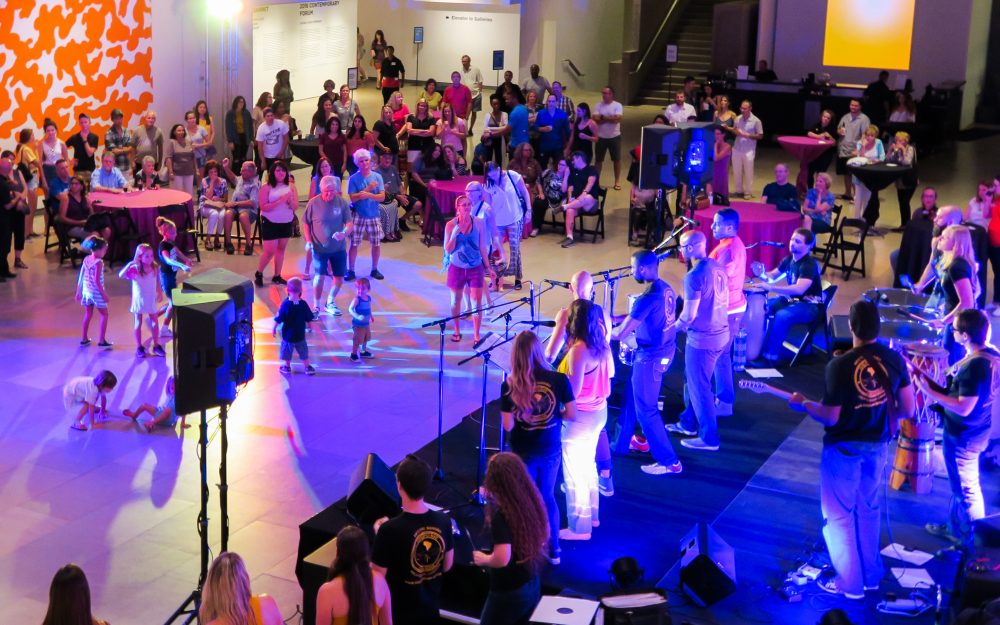
Discover a world of programs, workshops, and more, and experience your museum in a whole new way.
EXHIBITIONS
On view for a limited time, exhibitions present art from across the centuries and the globe, from iconic fashion to Old Master paintings, contemporary photography to historical objects of Asia.
MORECOLLECTIONS
Featuring more than 20,000 objects, the collection spans the globe, bringing the world to our city, and our city to the world.
MORE